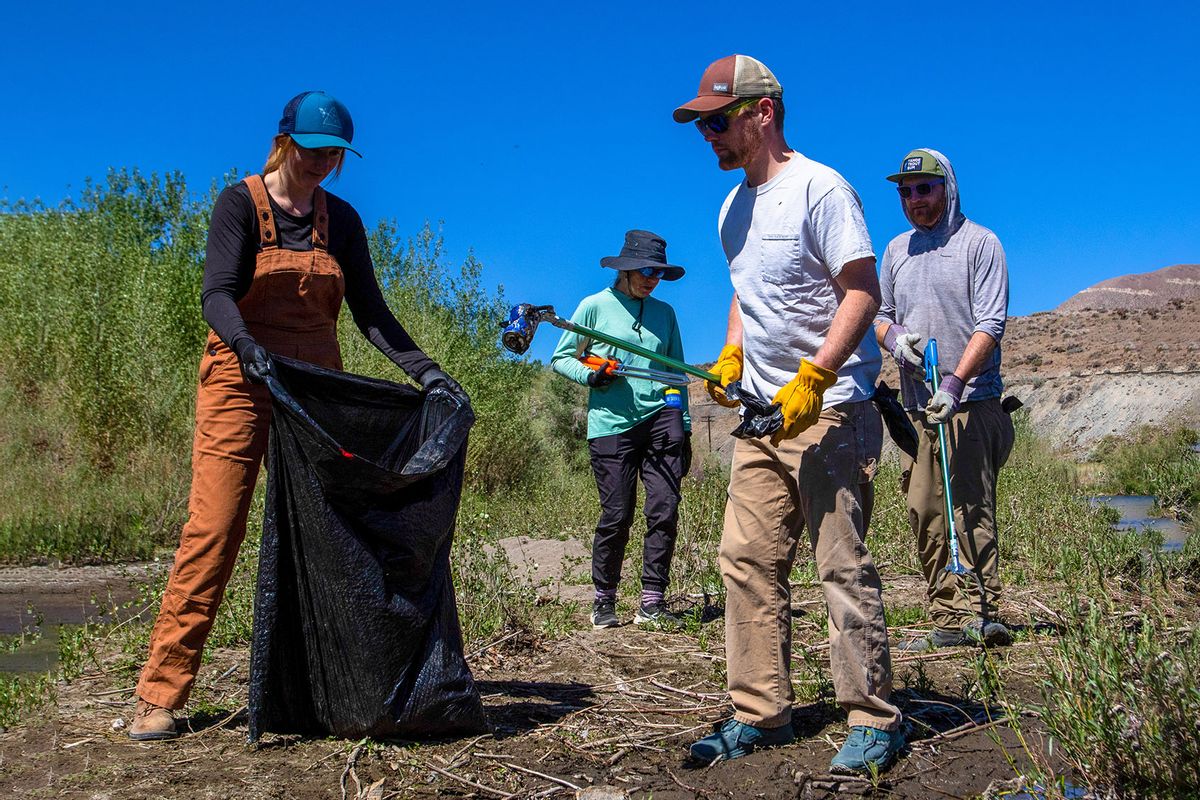The Biden Administration today launched a civilian Climate Corps program intended to employ 20,000 Americans to build and restore public lands. The idea is to create jobs while also working toward the Biden Administration’s promise to reach net zero emissions by 2050, deploying corps members to work in wind and solar production as well as environmental conservation projects. Created in the image of a Great Depression-era civilian climate corps program incorporated by former President Franklin D. Roosevelt, Biden’s program aims to “mobilize the next generation of conservation and resilience workers and maximize the creation of accessible training opportunities and good jobs.” However, the program will employ far less than the more than 3 million men in Roosevelt’s era.
The program was initially outlined in an executive order Biden issued during his first month in office. Originally, $30 billion was set aside for the program as a part of the Inflation Reduction Act, but this was ultimately removed. Administrative officials declined to tell the Washington Post how much or from where funding will come from instead, the outlet reported.
On Monday, House Democrats called on Biden to move forward with the program, citing the urgency of the climate crisis as demonstrated by recent flooding, extreme heat and devastating wildfires like those that ravaged Maui in August. “By leveraging the historic climate funding secured during your Administration, using existing authorities and coordinating across AmeriCorps and other relevant federal agencies, your Administration can create a federal Civilian Climate Corps that unites its members in an effort to fight climate change, build community resilience, support environmental justice and develop career pathways to good-paying union jobs focused on climate resilience and a clean economy,” they wrote.
On Sunday, tens of thousands of protestors marched in New York City urging Biden to declare a climate emergency, which he still has not done in spite of experts warning of an ongoing “biological holocaust” while humanity dangerously pushes our planet to its extreme limits. Meanwhile, record-shattering heatwaves made summer 2023 the hottest in humanity’s history and the U.S. experienced a record-breaking 23 natural disasters exceeding $1 billion in damages.



This is incredible news! While 20,000 is fewer jobs than I would have liked, it’s still 20,000 more people that are fighting to save our planet than we had before. Plus all those jobs will provide income to all those people and families, and they’ll be able to recirculate those funds to their local economies. I bet this program will generate more income than it’s cost over the long run, and that’s not even counting all the monetary savings that a more stable (or at least slower changing) climate will bring.
There’s an age limit btw: 30. 35 if you’re a veteran.
Millennials get shafted yet again.
Are they actually paying jobs or volunteer work like Americorps?
Also, I just see people in the photo doing trail work. Climate corps should be focused almost 100% on clean energy, mass transit projects, carbon capture technology, or planting trees.
There are a million trailwork volunteer opportunities. It’s a cool thing to do, but making existing parks better for visitors is doing nothing to fight climate change. I say this as someone who volunteers in my nearby parks and has volunteered on trail crews.
It was annoying not to have opportunities available to do more.
It was right in the first paragraph of the article.
“…deploying corps members to work in wind and solar production as well as environmental conservation projects.”
So yes, it (should be) more than just trail work.